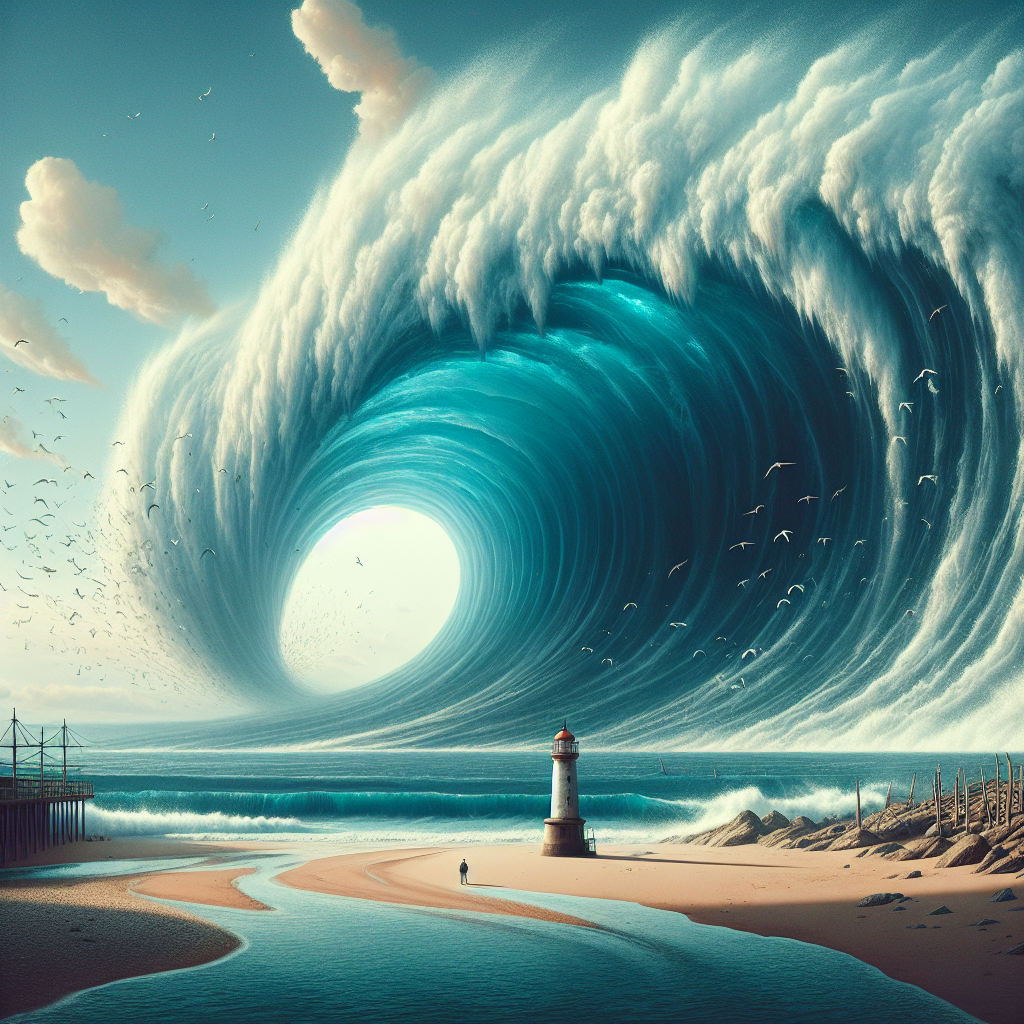UNESCO’s Tsunami Alert Saves Lives After Massive 8.8 Quake Near Russia
At the heart of this lifesaving operation was the Pacific Tsunami Warning System (PTWS), coordinated by UNESCO’s Intergovernmental Oceanographic Commission (IOC).

In the early hours of 30 July 2025, a devastating 8.8-magnitude undersea earthquake struck off the Kamchatka Peninsula in Russia, triggering global concern and activating tsunami alerts across the Pacific Ocean. Remarkably, just ten minutes after the seismic shock, UNESCO’s early warning systems sprang into action, issuing alerts that would prove pivotal in saving lives and minimizing damage.
The quake, one of the ten strongest recorded globally since 1900, was the most powerful since the 2011 Tōhoku earthquake in Japan. It underscores both the immense threat posed by tectonic instability in the Pacific “Ring of Fire” and the essential role of international coordination in emergency preparedness.
A Decade-Proven Lifeline: UNESCO’s Global Tsunami Warning System
At the heart of this lifesaving operation was the Pacific Tsunami Warning System (PTWS), coordinated by UNESCO’s Intergovernmental Oceanographic Commission (IOC). Within ten minutes, the system had issued a comprehensive alert to nations most at risk—including Russia and Japan—where immediate evacuation measures were initiated.
Just ten minutes later, within 20 minutes of the initial quake, updated forecasts detailed expected flood heights and projected impact zones. This critical information triggered wider alerts to Pacific Rim nations, including China, Indonesia, Mexico, the Philippines, Peru, the United States, and New Zealand. Several of these countries enacted precautionary evacuations in coastal areas.
UNESCO Director-General Audrey Azoulay applauded the rapid and coordinated response and pledged ongoing support for affected communities, particularly in preserving natural and cultural heritage along coastlines that could face long-term damage.
“This timely alert once again demonstrates the crucial role of international scientific cooperation in the face of natural hazards,” Azoulay said. “Lives were saved because of a system built on global trust, scientific rigor, and shared responsibility.”
Building the System: A Global Response to Past Tragedy
The foundation of today’s early warning systems can be traced to the 2004 Indian Ocean tsunami, which claimed more than 220,000 lives. In its wake, UNESCO spearheaded the development of a comprehensive, multiregional tsunami warning network.
Today, the system spans five global ocean basins:
-
Pacific Ocean
-
Indian Ocean
-
Caribbean Sea
-
Northeast Atlantic
-
Mediterranean Sea
This network includes thousands of undersea sensors, seismographs, tide gauges, and monitoring buoys, which feed data to regional alert centers. Once a threat is identified, a coordinated alert chain—from global to national to local—ensures that people at risk receive timely, accurate information.
The UNESCO-led system prioritizes communication, ensuring seamless data flow from scientific analysis centers to government authorities and, crucially, to exposed communities. The Kamchatka alert of 2025 demonstrated the efficacy of this design: millions of people received accurate alerts in time to act.
Beyond Alerts: Educating, Training, and Building Resilience
UNESCO’s role in tsunami preparedness is not limited to technology. Through its “Tsunami Ready” programme, implemented in 43 countries, the organization focuses on:
-
Community awareness and training
-
Development of local evacuation plans
-
Installation of public alert systems
-
Regular drills and simulations
These efforts aim to instill a culture of preparedness at the grassroots level. The Kamchatka event tested the system in real time and validated years of planning and practice.
Scientific Innovation for the Ocean’s Unknowns
UNESCO continues to invest in ocean science to better understand how tsunamis form, propagate, and affect coastlines. Through initiatives like seabed mapping, ocean observation, and risk modeling, scientists are improving predictive tools and disaster readiness.
These innovations are part of a broader UNESCO strategy that integrates tsunami preparedness into the UN Decade of Ocean Science for Sustainable Development (2021–2030), ensuring that communities not only survive tsunamis but become more resilient over time.
About UNESCO
With 194 Member States, UNESCO works globally to advance education, science, culture, and information. It oversees more than 2,000 World Heritage Sites, Biosphere Reserves, and Global Geoparks, and coordinates global networks including Creative Cities, Sustainable Cities, and Learning Cities.
Headquartered in Paris and with offices in 54 countries, UNESCO operates through a network of over 13,000 partner schools and institutions. It is currently led by Director-General Audrey Azoulay.
A Testament to Global Cooperation
The swift and coordinated response to the Kamchatka earthquake was not just a technological feat—it was a testament to what shared science, global solidarity, and years of investment in risk reduction can achieve.
“In a well-functioning democracy and resilient society,” said Azoulay, “every voice matters. Every life matters. And thanks to global preparedness, today, many of those lives were saved.”
ALSO READ
Heightened Tensions: Russian Air Defence Downs Ukrainian Drones
Sanseito: Japan's Upstart Party Challenging Immigration Norms
Overnight Attack: Aerial Skirmish over Russian Cities
Foreign Investors Shift Focus: Navigating Japan's Market Amid Election Jitters
Former Russian President Warns of Escalation with the West










